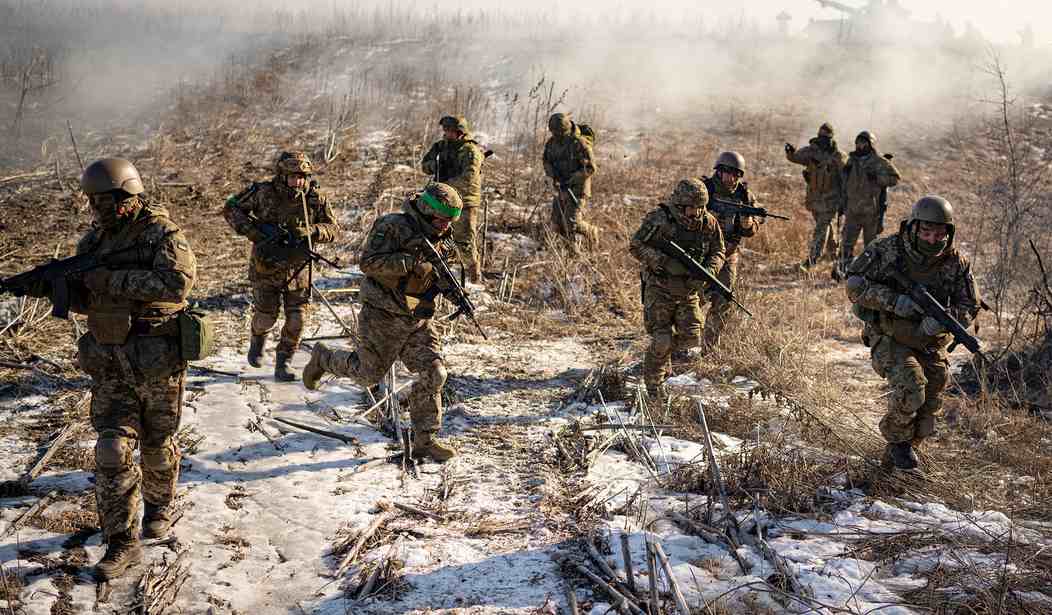On roads near Kyiv, Ukrainian army specialists dispose of “Russian Butterflies” and "Green parrots.”These brightly colored and attractive objects are not harmless toys but lethal landmines dropped by the Russian military to maim civilians and destroy cars. Most countries ban these mines, and their specific utilization in Ukraine is a war crime designed to kill and sow terror. This will continue even after the Russians are defeated. According to Ukraine’s Prime Minister Denys Shmigal, Russia’s invasion made Ukraine become the most mine-contaminated country in Europe.
This is not the first time Russia has deployed landmines against civilians,where great effort must be expended in their cleanup. In the 1980s, the Soviets dumped landmines out of helicopters in Afghanistan, and in the 1990s, Russian forces repeated this in Tajikistan and Georgia. Russian landmines are so ubiquitous that Ukraine has sought experts from Cambodia to Colombia to help with defusal. Russia is now repeating this strategy in Ukraine and exporting it to partners and proxies worldwide.
While Ukraine is the most mined country in Europe, Azerbaijan is the close second. Azerbaijan was mined by Russian proxies in the 1990s, and now Russian proxies are doing it again. The mining of Azerbaijani territories in parts of the Karabakh region continues under the Russian military’s “peacekeeping” presence. Ukraine and Azerbaijan are confronting the terrorist threat of indiscriminate landmines,and in both cases, Russia’s expansionist regime is the culprit.The U.S. should support them through a targeted assistance program.
Although Azerbaijan was able to liberate the bulk of its territory in the fall of 2020 during the Second Karabakh War, Armenian troops operating with the Russian military contingent in the region continued to lay mines in occupied lands.In January 2023, Azerbaijan’s President Ilham Aliyev announced that following the 2020 war, there was a large-scale mine-planting campaign to prevent Azerbaijanis from returning to their home territories, where over a million people became refugees during the First Karabakh War between 1988 and 1994.
Recommended
There is clear evidence of Russian-Armenian cooperation in minelaying.According to Azerbaijan’s Foreign Minister Jeyhun Bayramov, thousands of mines have been produced in Armenia and deployed in Karabakh since the end of the war despite Yerevan signing a commitment to cease all military activities. Armenian companies Ayk-Mek and Elektron based in Yerevan, are hubs for producing landmines laid in Azerbaijan. Elektron has long been jointly owned by Russians and Armenians, and both cooperate with the Armenian Defense Ministry.
Russian proxies aren’t just laying more mines but preventing their removal. According to a recent report by the international group Landmine Monitor 2022, the presence of Russian forces has also led to restrictions on any de-mining activities.This only exacerbates casualties. By April 2023, 124 people in Ukraine, including six children, had been killed by landmines since the invasion began. Meanwhile, 300 Azerbaijanis were killed or seriously injured by Armenian mines. 30% of Ukraine's territory remains dangerous, and the UN agency UNDP reported in April 2023 that more than 14 million people are at risk of being killed or maimed by mines. Ukrainian Defense Minister Oleksii Reznikov calculates that demining could take 30 years. A similar timetable is envisaged for Azerbaijan. According to a World Bank estimate, demining will cost Ukraine $37.4 billion, while the UNDP reports that Azerbaijan would need $37.3 billion.
Baku's experience dealing with the landmine threat can be helpful to Kyiv and the international community. After repeatedly stressing the issue, in April 2023, President Aliyev announced an initiative to make “humanitarian demining” the 18th goal of the UN’s sustainable development program and proposed the creation of a group of mine-affected countries. After appealing to the International Court of Justice to stop the “killing and maiming of Azerbaijanis by explosive devices," an international anti-landmine regime is slowly emerging.
This is particularly important in light of President Zelensky’s statement in December 2022, which underscored that among the charges against Russia is “mine terror." There is overwhelming evidence that Russian forces and their proxies planted landmines andbooby traps in hidden locations before retreating.
This also is happening in Azerbaijan. In February 2023, a booby-trapped mass grave in Karabakh was discovered.Between August and November 2022, many booby traps were found in settlements in the Lachin region from where Armenian forces fled in December 2020 after 30 years of occupation.They planted booby traps under the floors of house entrances and in the yards of residential buildings, just as the Russian invaders did before fleeing from Bucha, Irpin, and other towns in the Kyiv region, were also discovered.
The US seems intent on joining these Azerbaijani initiatives. In June 2022, partly due to revulsion at Russian landmine tactics, the Biden Administration announced a new landmine policy and, in September of the same year, allocated funds to help de-mine the South Caucasus.
An international movement against landmines may be a silver lining to emerge from Russia’s invasion of Ukraine. A constellation of American assistance, global expertise and support, and Ukrainian publicity seems to be realizing Azerbaijan’s anti-mine initiatives. Even though Russian landmines will continue to kill Ukrainians, Georgians, Azeris, and more for years, the US and the international community can at least use this impetus to move forward and ensure that landmines needlessly kill no more. However, this can only be realized if Russia and its proxies are stymied and held accountable for their malicious actions in the first place.





















Join the conversation as a VIP Member